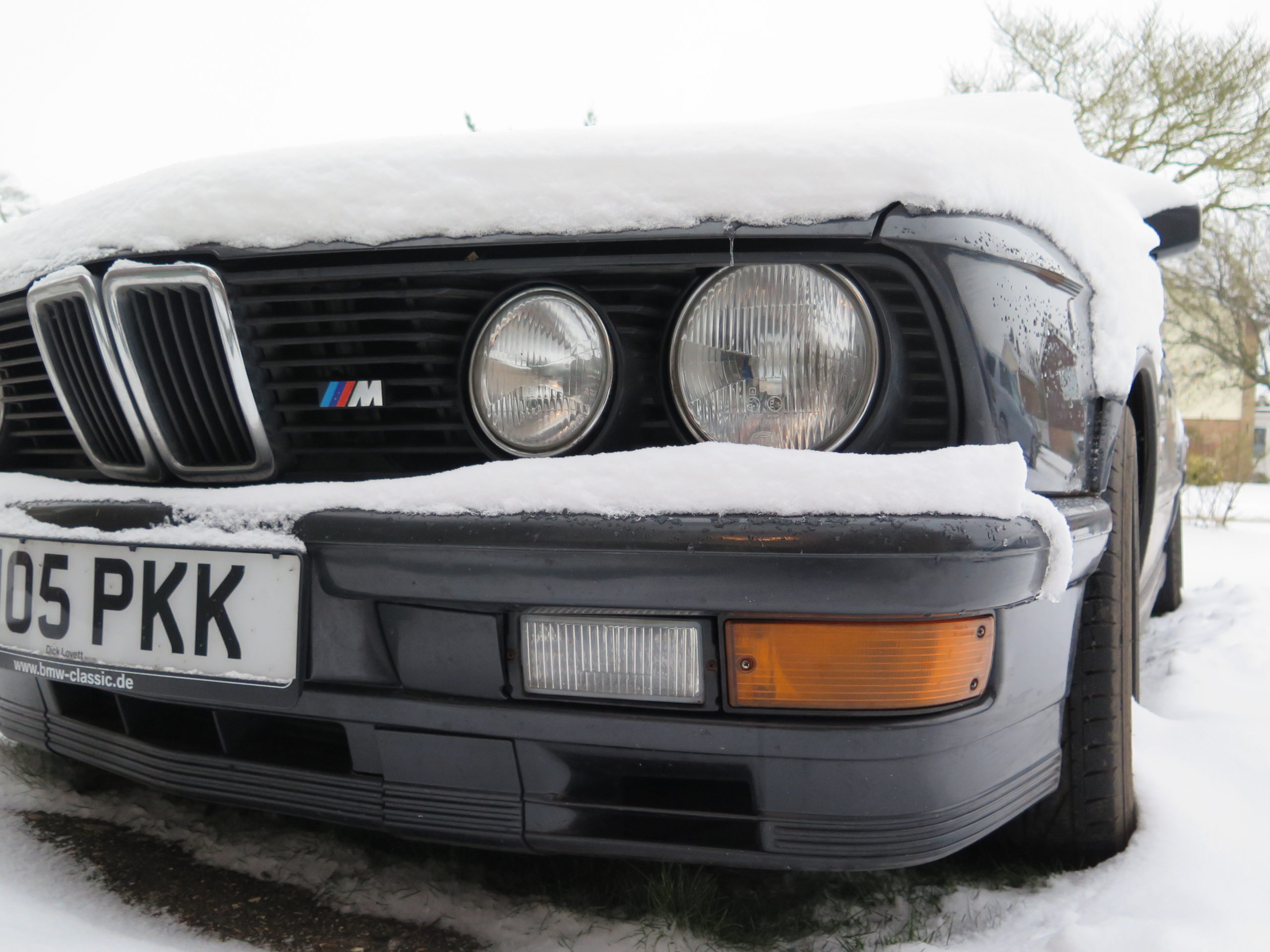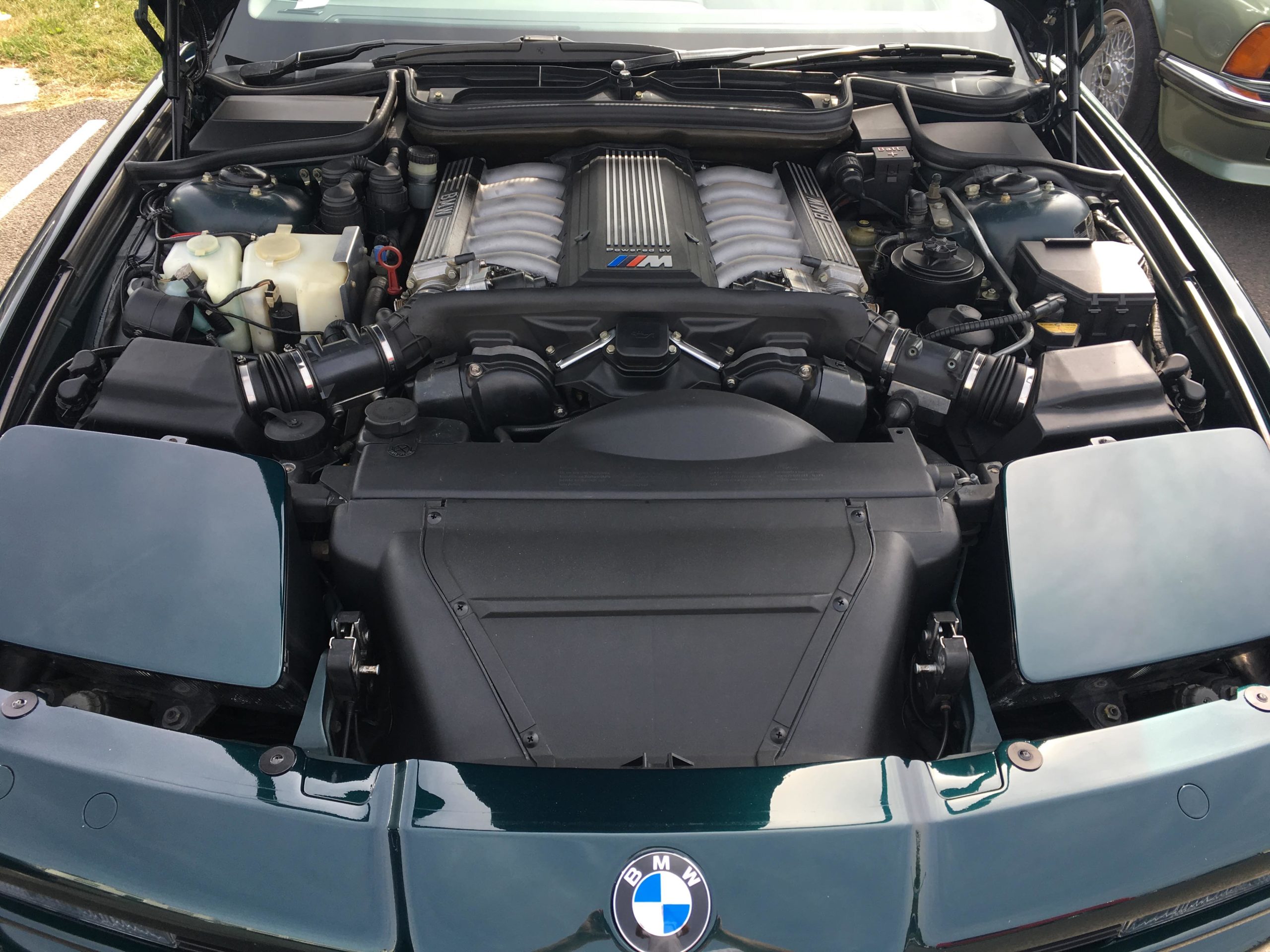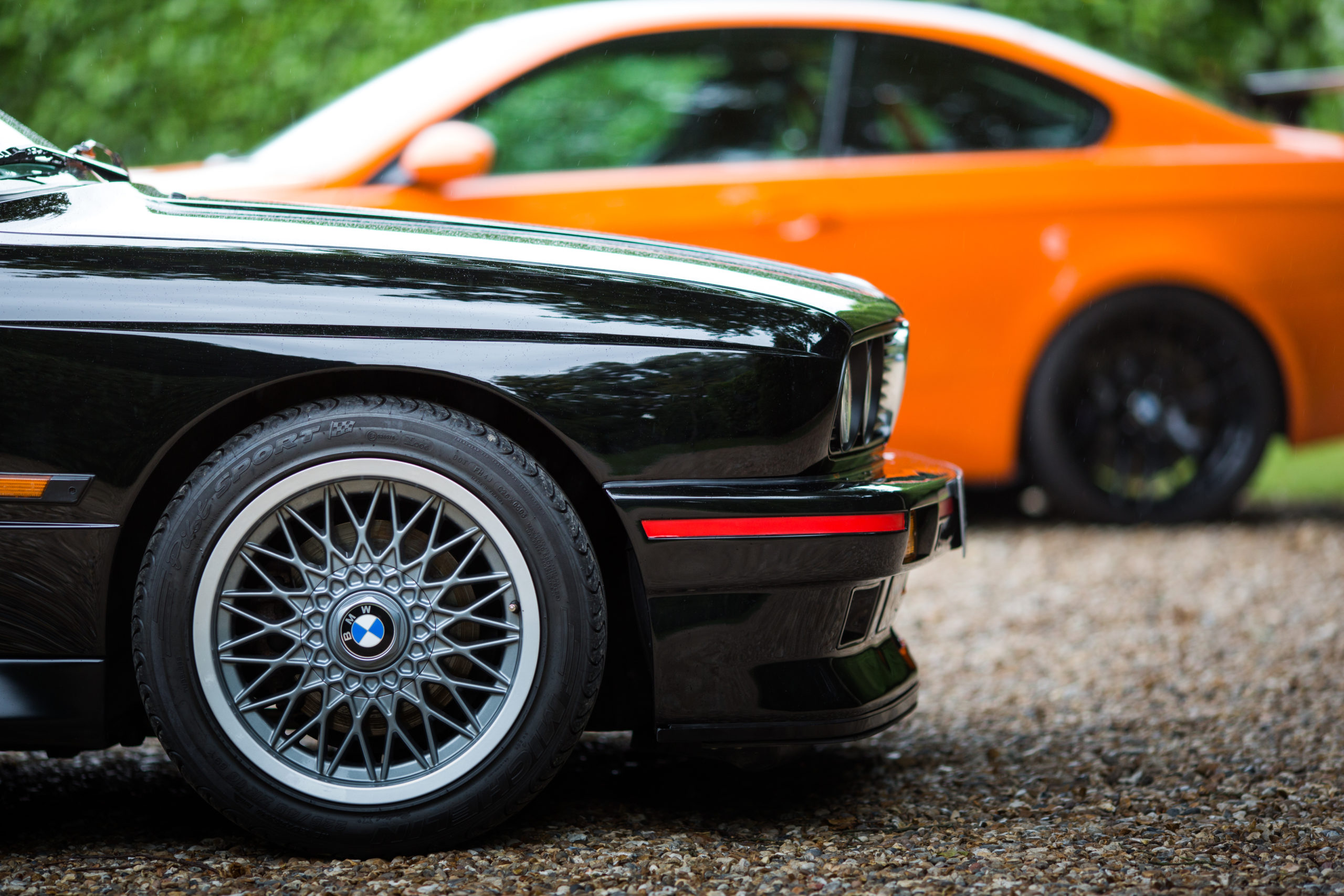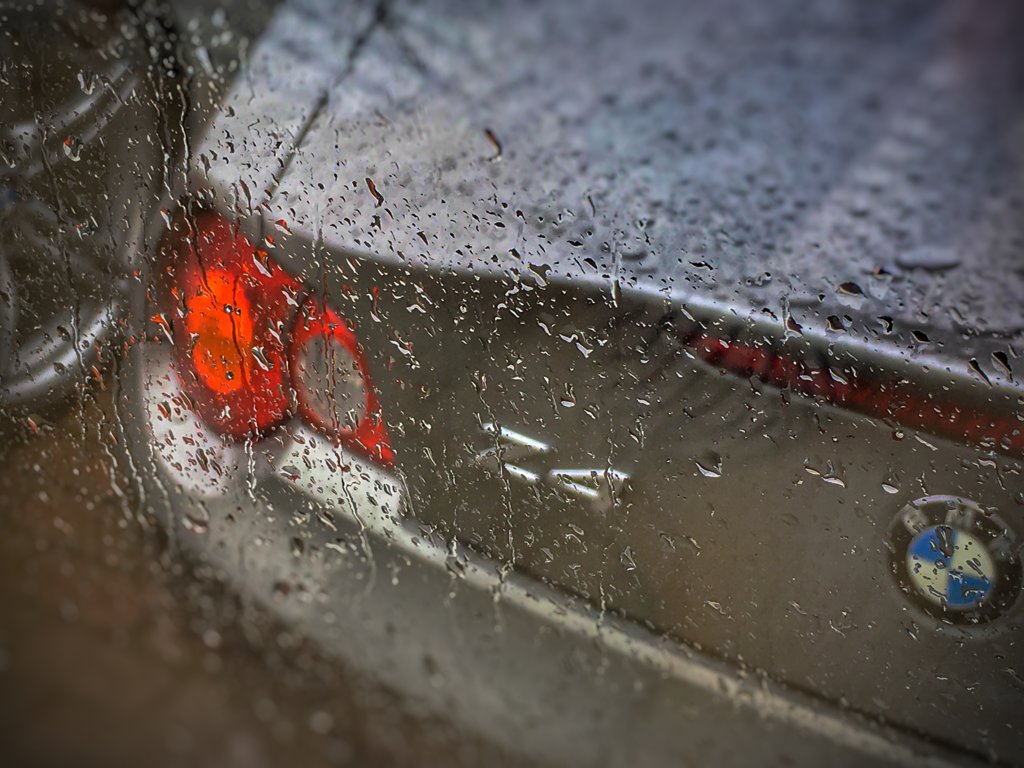Source: Hamilton Classic Ltd 2018
Words by Colin Grant
Preparing your classic car for winter
How was your summer? Certainly for us it was one of the best we can remember for getting out and about in classic cars or enjoying one of the many motorsport fixtures around the UK. But, with the nights drawing in and our favourite B-roads now cloaked in the colours of Autumn, it is time to look at preparing your classic for the winter months that lie ahead.
There are of course, two schools of thought on winter time with classic cars. Store them away or keep them on the road for those occasional dry and sunny winter days, the choice is yours of course. But, whichever approach you choose, Hamilton Classic have compiled a tips list for those of you looking to store your pride and joy at this time of year.
Are you a member?
Receive between 10-15% off Hamilton Classic products highlighted in the list.

General Preparation
Firstly, the best thing you can do before storing a car is clean it thoroughly inside, outside and underneath. This makes sure there is no dirt festering in the crevices that can encourage corrosion to take hold. If you have a soft top car it is also worth cleaning the hood as any dirt could encourage mould to form and if you are storing the car indoors do not be tempted to leave the hood folded away as this traps moisture and can permanently mark it – put it up.
Secondly, check all your levels – ensuring they are all topped up and anything that contains water, such as coolant and washer fluid, is not going to freeze should the temperature drop below freezing. It is also worth checking to see if you have any coolant leaks and get these seen to, as coolant can stain and leave a nasty residue which can be difficult to remove. Also check the antifreeze content in the cooling system by purchasing an antifreeze checker and follow the instructions that come with it to ensure the mix is correct.
Thirdly, if you have the time – remove each of your wheel nuts, clean them and the hole they came out of or the stud they came off of with an oil based penetrating spray (such as WD40 or Gibbs Penetrating Spray) and then refit. If you do this one at a time, it will mean you don’t actually have to take the wheels off. How many times have you had a puncture and not been able to get the wheel nuts undone? If you leave a car stationary – in particular outside – this problem can be magnified. However, do not change the brake fluid at this time. This is best done when coming out of storage.

Brakes
After washing your car ready for winter storage make sure your discs, if fitted, are dry as leaving them wet will cause the pads to stick to the disc and lock on, also rusting can form. Brake fluid is hygroscopic and naturally absorbs moisture from the atmosphere, so we recommend the brake fluid is changed every two years. The reason is that in absorbing moisture it reduces the boiling point of the fluid. The lower boiling point can cause the fluid to boil, under heavy load, which will cause poor braking – highly undesirable. It’s not a bad idea to get in your car every week or so and pump the brakes. Lastly leave your car parked, if possible, with the handbrake off as this can tend to seize on over the winter months.
Fuel system/Engine
Ideally the petrol in your tank should be drained to stop a build-up of moisture in the fuel, together with your carburettors. An alternative is to fill the tank up and add a stabiliser and follow the instructions by running your engine to insure the stabiliser reaches all throughout the system and is present in the carb bowl. With regard to the engine it’s a good idea to change the oil and filter. Old oil can have acids suspended in the fluid which can be potentially destructive. It’s also a good idea to remove the plugs and spray some light oil into the cylinder bores.

Tyres
Tyres are easily forgotten when storing a car. If it is going to be stationary for any length of time then tyres can suffer. There are many different opinions to help protect them and most ideas are good ones.
The three main options to consider are as follows:
- Jack the car up and put it on axle stands so the wheels are not in contact with the ground. This not only helps the tyres but can take the strain off bearings. However it is important to make sure the car is supported on the suspension – not the chassis.
- Pump the tyres up about 15psi higher than normal.
- Use a product such as a ‘tyre trainer’.
Option 1 is not for everyone and if you need to use the car for whatever reason it can be a nuisance.
Option 2 is what many of us would have done in the past and can certainly help – however, perishing can be encouraged and small flat spots can still form on the tyres – although this is less of an issue in the winter than it is in the summer. You also have to remember to drop the pressures again when you wish to use the car – it can be potentially lethal not to do so.
Option 3 is the most convenient solution as tyre pressures do not necessarily need much adjustment and the ‘trainers’ will help prevent flat spots and premature perishing by supporting more of the tyre tread area. The standard tyre trainers suitable are for wheel sizes up to 17″ are modular and will slot together for use on tyres wider than 215. For bigger wheel and tyre combinations there are also heavy-duty tyre trainers.
One final thing to do is inspect your tyres and try and remove wherever possible any stones or debris from within the tread.
Once you have done all this you may wish, if you are going to cover the car, to think about covering your wheels and tyres. Believe it or not Wheel Spats are now available to do just this and are available through the club from Hamilton Classic.

Covering your car
If you wish to consider covering your car, there are various options but be careful as there are rules that we recommend you adhere to.
There are two things you should avoid when covering a car. They are as follows:
- You must never use a material that is 100% waterproof (one that does not breathe), such as an ‘old tarpaulin’ or plastic sheet. Moisture from below the car or airborne moisture will still get underneath this type of cover and will leave the car damp and ‘sweating’. Mould will be encouraged to grow, water marks and micro-blistering may appear in the paintwork and the car will probably be in a worse state than if it was not covered at all.
- If you are storing the car outdoors or indoors in a non-heated environment you should also avoid using a material which is hygroscopic. Cotton is such a material and although many cars have been covered with this material over the years it is not very suitable to use in a climate such as ours. Due to the way it is woven it does not have very good resistance to stopping dust from going through it and because it is hygroscopic it will draw in and hold moisture against the body of the car.
If storing your car outside
Ideally in this country you should use a good fitting semi-tailored car cover. By this we mean a cover that is designed to fit a generic shape and size of vehicle, not a ‘one size fits all’ cover or a fully tailored cover.
A ‘one size fits all’ cover will more often than not be too baggy, and as such will probably fit poorly and move about excessively in the wind – excessive flapping can damage the car beneath but also prematurely wear out the cover. This type of cover tends to appear value for money, but more often than not they can cost you far more than if you had spent three times the price on a decent cover in the first place!
A fully tailored cover, whilst it will without doubt be well made, will sit too close to the body of the car. In climates found in the south of France or Spain you can rely on the sun coming out, but in this country we cannot. Whether we like it or not moisture will get under a cover (and by moisture we do not generally mean rain) and you need either the sun and/or air circulation to help remove this moisture. So even if the cover is breathable, because it fits like a glove it will not allow the air to circulate beneath it and if the sun does not come out the moisture can remain or at least take much longer to escape.
Therefore, a good fitting, breathable, semi-tailored car cover will allow better air circulation beneath it meaning that it is not essential that the sun comes out to help remove moisture. Think of a well fitted mitten rather than a glove, and you will probably not go far wrong; and if it has a soft inner lining then even if the wind picks up and the cover does move slightly, it will not mark the car.

The other properties that are important for an outdoor cover are that it should be breathable – preferably through the whole body of the material and not just through a couple of vents. Vented covers allow air circulation in small areas but still leave pockets where moisture does not escape from (i.e. if the vents are on the roof, the top of the car might dry out but the headlights will still be damp). To achieve this, a multilayer construction with offset perforations through every layer allows moisture and air to escape but does not encourage rain, sleet and snow to penetrate. It should also be in a light colour to help reflect away as much damaging ultra violet light as possible. (Ideally covers should be made in white, but that is far too impractical.) If colours are dull or dark then the ultra violet is absorbed and this not only can be harmful to the vehicle beneath, but can prematurely destroy the cover making it brittle and fall apart. Additionally, the seams should be welded, as stitched seams can be broken down by ultra violet light. It should ideally be made in a multi layer construction as this makes them more rigid and less likely to flap about in the wind, and finally it should have good holding capabilities, preferably with strong elastic hems at each end to hook under the bumpers and some other form of strapping that can go under the vehicle to secure it in high winds.
On the subject of snow: while a cover will keep snow off a car, there is no physical cover designed that can breathe beneath a layer of snow. The snow itself forms the barrier, so whenever possible brush snow off a cover as soon as possible to ensure that it can start to breathe once again.
If storing a car indoors
For indoor solutions you have even more choices, but again there are rules that apply and the most important one, mentioned already, is to avoid covering the vehicle in a hygroscopic material unless the car is to be kept in a really dry environment.
So, unless in a dry environment cotton or natural fibres are best avoided, but there are plenty of ‘non hygroscopic’ man-made dust covers out there, even in the ‘one size fits all’ category, but remember the better the cover fits the less likely it is that dust will get underneath it.
If storing a car in an open barn or a garage that is not heated then a good semi-tailored breathable cover is recommended for the same reasons as described for outdoor covers. However, if you have the luxury of a dry, warm garage and you wish to spend the extra money you could go the ‘whole hog’ and have a fully tailored cover. As to whether it does a better job compared to a good semi-tailored cover, we doubt it, but they look fantastic!
On a separate note if you have a garage, there is a train of thought that you should seal it up to stop moisture and draughts getting in. However, in the majority of cases allowing it to be draughty can actually be a help rather than a hindrance. (This does not apply to a heated garage.)
If you use a de-humidifier, these are great at keeping a car moisture free, but be very careful how high you set them. If a de-humidifier is set too high it will draw all the moisture out of everything around it. That includes rubber seals, leather seats and anything made of vinyl or soft plastic, all of which can become brittle and crack, as well as anything made with wood, such as veneer dashboards which can warp and in turn force the veneer to crack. They can also be expensive to run and need emptying.
The final option is to use one of the ‘air circulation tents’ on the market. These ‘covers’ never touch the car (in theory). There are three of these available in the UK, the Cair-O-Port, the Airchamber, (the Car Capsule has been discontinued,) and the Carcoon. They use fans to constantly circulate air to stop moisture and dust from settling on whatever is within them.
All the air tents are very good at what they do. They are all now available with frames and of the three, the Cair-o-port is the sturdiest and designed to be used in garages with up and over doors – it is also unique as it benefits from an extra fan to ensure excellent air circulation under the car. Please note the Airchamber and the Cair-o-Portcost about the same to run a year as a dehumidifier can cost to run a fortnight!
Finally for outdoor use there is new product being launched by Hamilton Classic this winter called the Autopod – ‘Indoors’, Outdoors! This is a second generation of a very successful product that they produced about four years ago with a host of new design features and improvements. Fundamentally it is an enclosed tent for a car. The one and only size for those of you who have the space is 6.6m by 3m at the base and like most modern tents it is a fully enclosed system with a built in floor and a separate outer layer. However, one of the major improvements is that the inner layer has the option of the fan kit from a Cair-o-Port, ensuring the perfect environment in which to keep a car throughout the year and not just for winter. Available both with or without fans, it comes in green and unlike the outdoor Carcoon, is easy to use for any kind of storage with easy access at any time without any deconstructing required.
Covering in General
Remember, the most important rule of all is a cover should only be put on a clean car, as any dirt between the cover and the panel work has the potential to scratch. (This rule does not apply to the Cair-O-Port, Airchamber or Autopod as the material never touches the car, but to erect a Carcoon requires material to be dragged over the body of the car and so therefore ideally it must be clean.) And remember if you are storing cars in the winter outdoors and it snows, the cover will not be able to breathe – regardless of who makes it or how the cover is made! Brush it off at the first opportunity.
Batteries
Let us be honest, one of the biggest nuisances of owning a car that you do not use very often is nine times out of 10 when you go to start it – it won’t, and of those cases 95 times out 100 it is because the battery has gone flat. This also applies to lawn mowers, motorbikes etc.
Batteries are not getting any cheaper, and for about half the price of an average car battery you can buy a conditioner that will help you look after it so that hopefully you never have to replace it, or at least much less frequently.

The conditioner’s job is to keep the battery topped up so it is always ready to use. There are two main types – analogue and digital/automatic. We recommend the latter as they guarantee never to overcharge a battery which is always a possibility with the analogue type. We have for many years recommended the CTEK range of battery conditioners mainly because of their reliability, ease of use, the fact they can be used outside and because they come with a five year warranty. Favoured also by The Telegraph’s Honest John and Classic and Sports Car Magazine, the CTEK3600 model has won virtually every comparison test it has been entered for and is the current Auto Express best buy. CTEK Products are also recommended or supplied as standard or optional equipment by Alfa Romeo, Aston Martin, Bentley, BMW, Ferrari, Harley Davidson, Lamborghini, Lexus, Maserati, Maybach, Mercedes-Benz and Porsche among others.
The beauty of a product like this is you can connect it up as soon as you finish using the car and leave it connected permanently without worrying about it overcharging the battery. The CTEK units have the benefit over most of the opposition in that they are also waterproof so if you do not have the luxury of garage space then you can safely use it outside too.
Finally, if you do not have the luxury of 240v to plug your car into, then you may wish to consider a solar conditioner. While these can never be as good for your battery as the mains conditioners, they will at least slow down the degradation a battery suffers when it is not being used.
General
Any chrome items on the car should be cleaned and lightly oiled or greased to protect them from the rigours of winter. Also ensure that any items that have grease nipples are greased and apply some grease to movable fittings.
Don’t cancel your insurance policy during this time as car thieves are just as happy stealing from a locked garage as they are stealing off the street, as a friend of mine found out.
If your car is being stored in a barn or in a garage where there is the possibility of vermin, then make sure you take the necessary precautions as mice or rats can do an amazing amount of damage to your car by chewing wires, interior trim, seats etc. Interestingly they don’t like the hum the fans of a Cair-O-Port make – so another great reason to use one!
One thing it’s best never to do is to start your car and leave it running at intervals during its storage. This just creates excess moisture in the engine and exhaust with damaging effects. If you want to run it, take it out for at least a ten-mile drive to make sure everything warms up and the moisture is cleared. You can, if your car is supplied with a starting handle, spray light oil down the plug holes and turn the engine over with the handle to make sure the bores are kept lubricated.
Finally give the electrics a spray over with WD40 or equivalent as this will help stop moisture ingress during the winter months.



